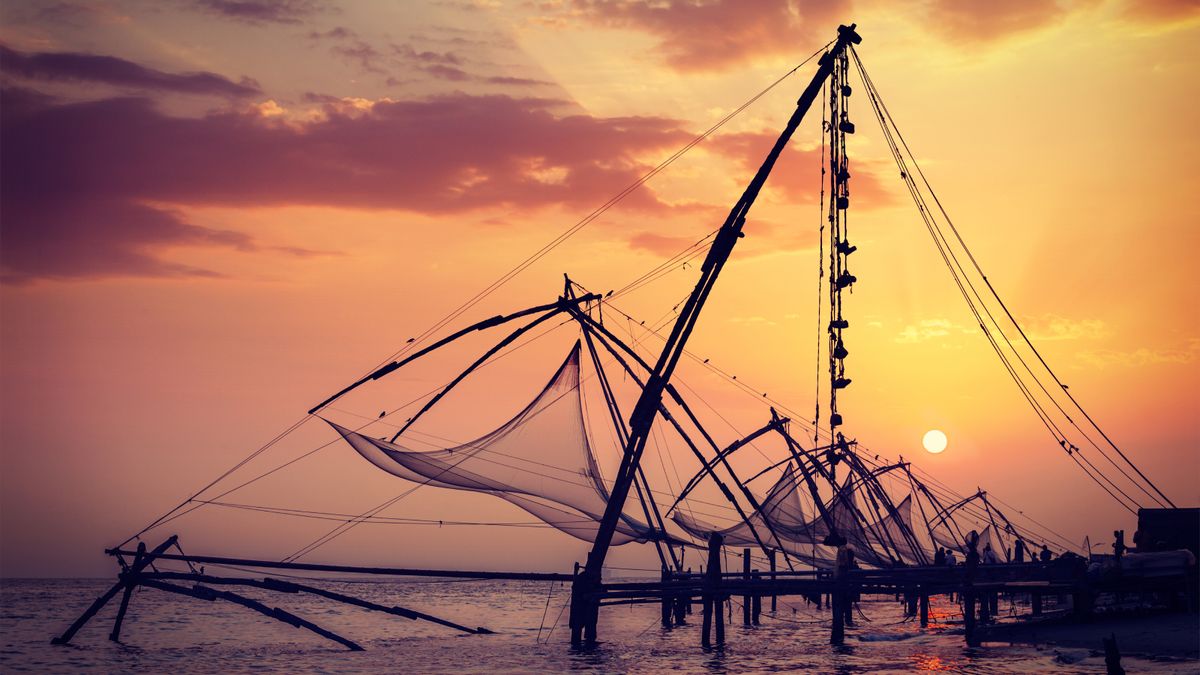Bolgatty Palace in Kochi holds a special place in my travel memories — of family dinners during my summer vacations as a child when this erstwhile palace functioned as a resort. It’s still a resort, operated by KTDC (Kerala Tourism Development Corporation), but the area around this resort has transformed since my childhood. You could say the same thing about destination Kochi. The Bolgatty area is now home to one of Kerala’s largest luxury hotels – Grand Hyatt Kochi, the starting point of my recent Kochi trail.
Even as a frequent visitor to Kerala’s bustling commercial capital, I am often astounded by the pace of change that has gripped this city. From a well-managed Metro to high-rise residential towers and malls that come alive every weekend — change is everywhere. But behind these glitzy new developments is the soul of a city that has seen major European powers jostle for supremacy and to control the fabled spice route — which is why Fort Kochi is the best spot to begin your Kochi adventure. Kochi’s story actually begins in 1341 in a port city in the Thrissur district.
A cycling tour that takes you back in time
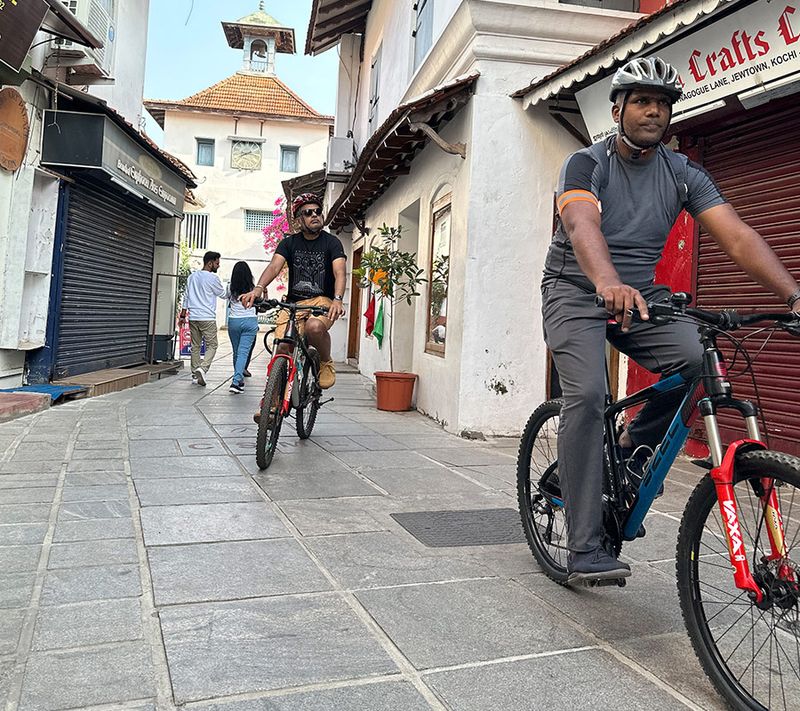
Shagzil Khan calls himself a cultural interpreter, I know him as a local history expert. Four years ago, he walked me through Fort Kochi; this time, we switched to bicycles in a tour staged by Grand Hyatt Kochi. Many of Kochi’s visitors spend days soaking in Fort Kochi’s rich history, shaped by colonial powers like the Portuguese and Dutch. They are rarely disappointed. Stories are dime a dozen here.
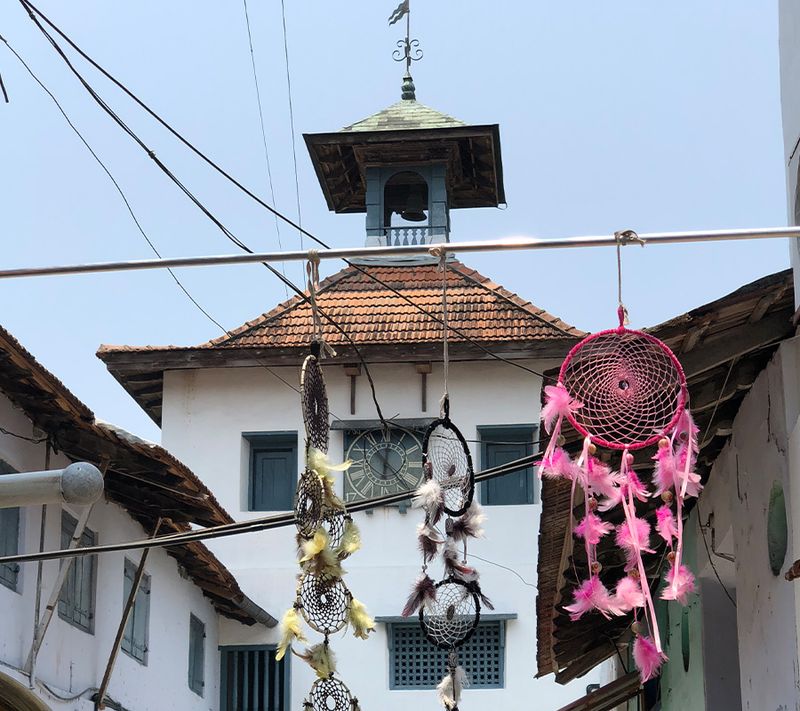
You’ll hear about the city’s once thriving Jewish community — the Paradesi synagogue in Mattancherry is one of the only surviving links and one of the stops on the cycling trail. Our 18-km trail took us through Mattancherry’s bustling wholesale spice market which is a throwback to Kochi’s glorious past. Muziris (which is now identified with Kodungallur in Thrissur district) was the centre of the Indian spice trade since ancient times. This port was destroyed by the massive flooding of the Periyar River in 1341. The spice hub shifted to Kochi as we know it today. There are references to Kochi in books written by Ma Huan, a Chinese voyager back in the 15th century.
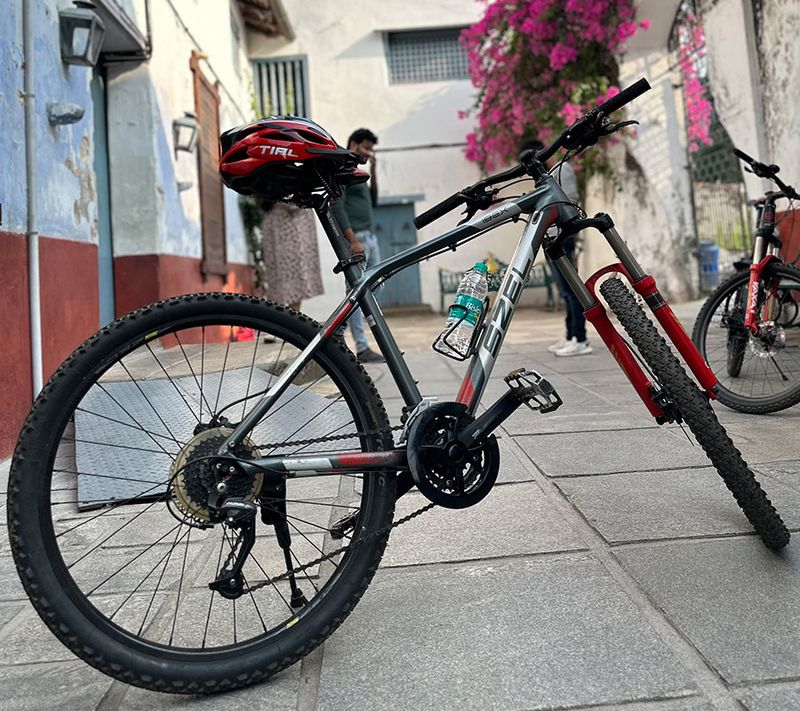
The Portuguese, Dutch and finally the British arrived in Kochi in the quest for black gold (pepper). The legacy of these colonial powers lives on. The Dutch cemetery is a case in point and Bolgatty Palace (one of the largest Dutch palaces outside the Netherlands) was built in 1744 by Dutch traders. Some of these landmarks, like the Pepper House (a waterfront heritage building which is essentially two spice godowns that are bisected by a large courtyard), came to the fore in the recently concluded Kochi Biennale. I’d recommend walking through these streets as well as the bicycle trail if you are good to cycle for about two hours just after sunrise.

Cafe trails

From cafes housed in colonial-era buildings in Fort Kochi to hipster magnets in the city’s upmarket residential districts, Kochi’s eclectic cafes are the new bubbles that help locals and tourists truly disconnect. Lila is Kochi’s newest hangout for the city’s opinion makers. This experiential space curates food, art and performances in an atmospheric building that dates back more than four centuries to Kochi’s Portuguese era. Kashi Art Café is one of my favourite chill zones. Fort Kochi is not just a hub for the city’s global travellers but a hangout for the city’s creative folks and well-heeled. Kashi blurs the lines between an art gallery and a cafe. Some of the objets d’art make for interesting photographs but you’re more likely to photograph their French toast for Instagram love.
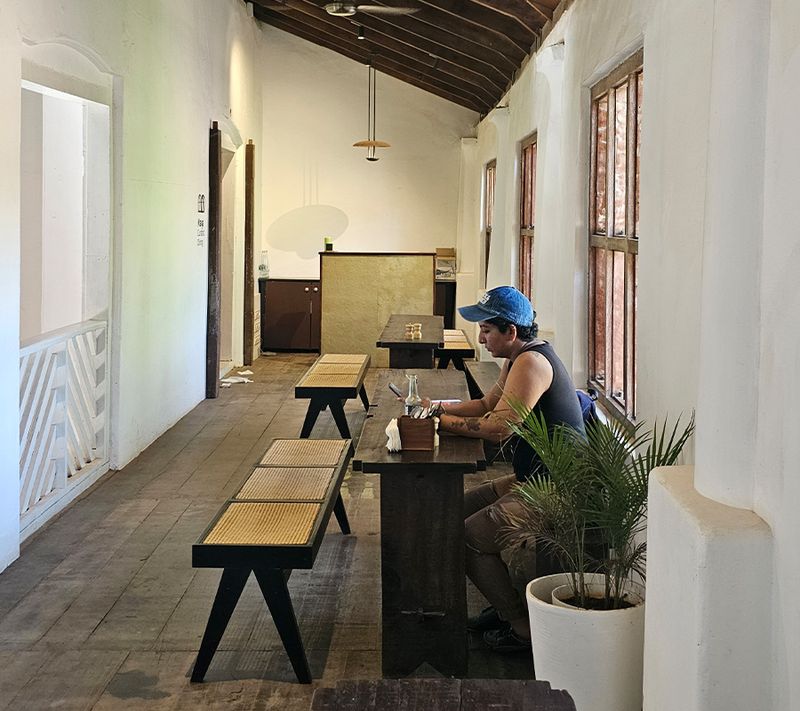
An eclectic food scene
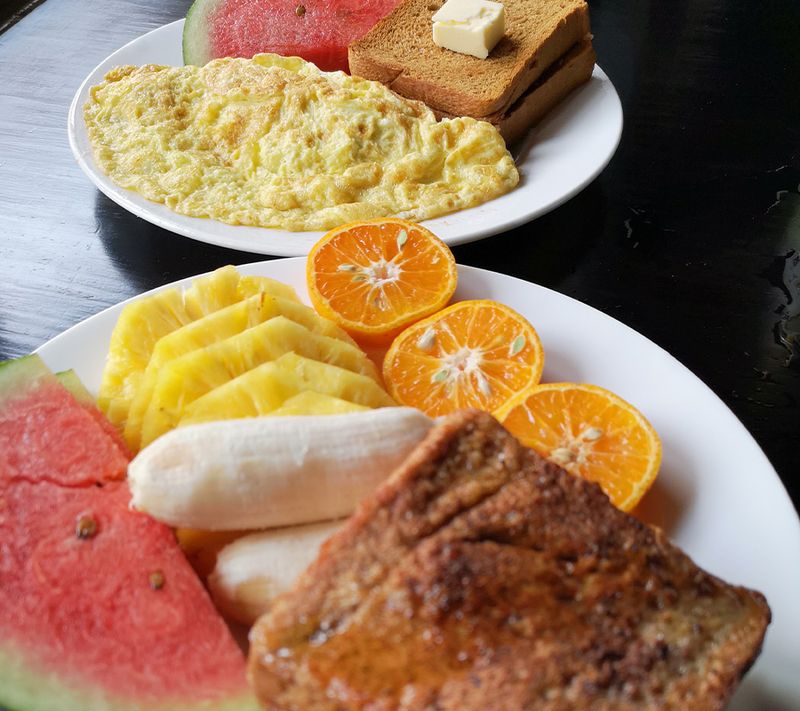
The city’s dining scene is a unique tapestry of local restaurants, fine dining restaurants in luxury hotels and laidback cafes. East Indies at the Eighth Bastion is a must-do stop. This contemporary hotel celebrates Kochi’s Dutch connection. The menu might be compact but it is fascinating, featuring an interplay between local cuisine and Dutch and Western influences. There’s also room for Southeast Asian cuisine that makes a connection with the Dutch spice route. Thai Soul, located within the confines of the Grand Hyatt Kochi, is one of the city’s best Asian dining experiences. It rounds up Thai signatures from across the country’s five broad culinary regions.
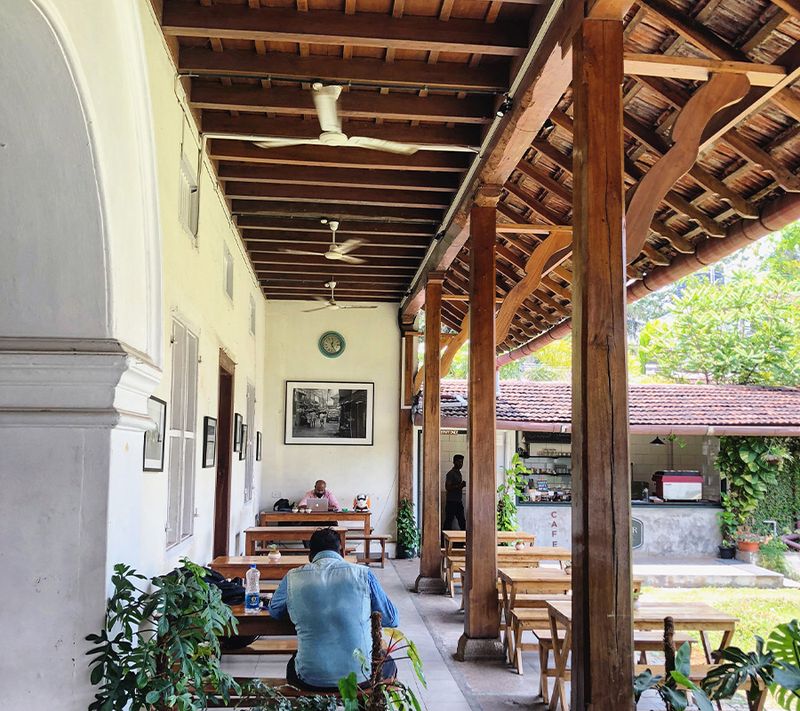
Explore Kochi’s fishing traditions

One of Kochi’s most iconic images is a Chinese fishing net against a surreal sunset. There’s a theory that the name Cochin is derived from co-chin (meaning ‘like China’). The city’s fishing nets date back to the 14th century when they were introduced by Chinese explorers. These large horizontal nets are held out by huge mechanical contrivances. More recently, many fishing net operators started replacing these original teak wood frames with steel pipes. This is now being reversed by a government project that is aiming to retain the charm of these historic fishing nets. You can check out these nets around Fort Kochi (do get there around sunset) and Vypin.

This historic fishing harbour is also home to a large market where you can see how fish are auctioned. I also visited At Matsyafed Njarackal fish farm where you can see how fish are bred, farmed, caught and brought to you. My fishing expedition ended with a visit to the Portuguese-built lighthouse at Puthyvype Beach.
Kochi’s iconic churches
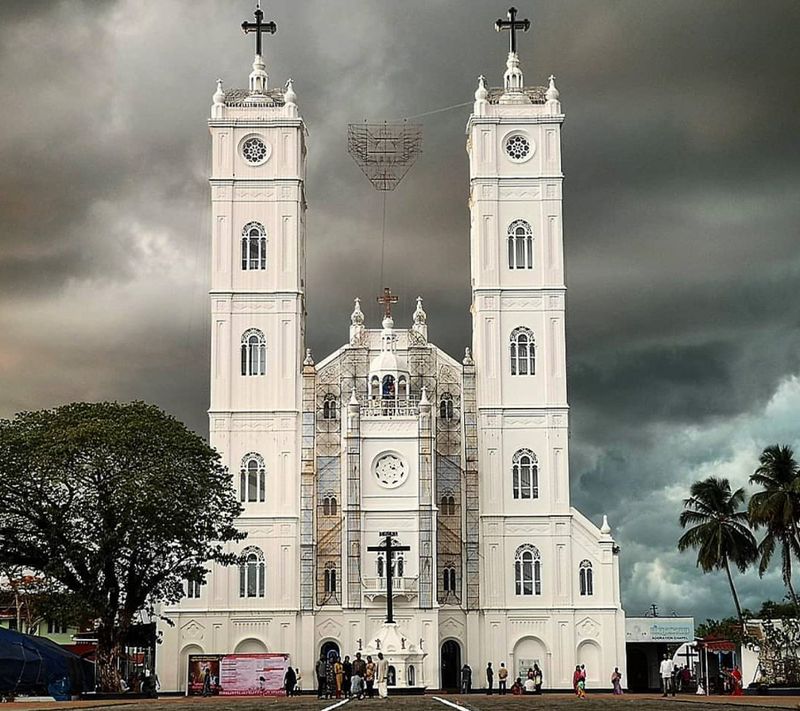
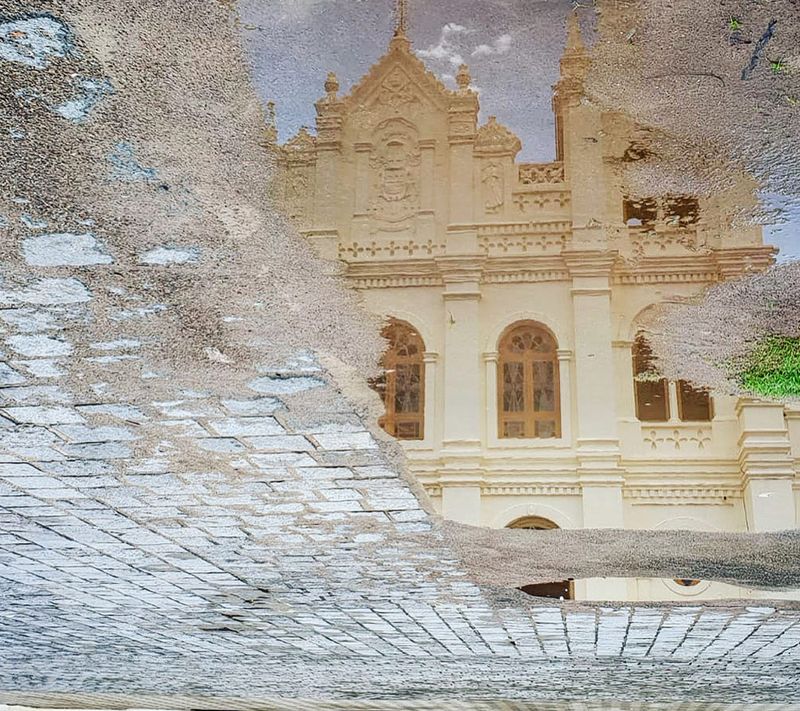
Kochi is home to some of India’s most historic churches and religiously significant shrines. I’d suggest making time to visit at least three churches when you are here. There’s St Francis Church, one of the oldest European churches in India, that dates back to 1503, where the Portuguese explorer was originally buried. Santa Cruz Basilica is one of nine basilicas in the state and was elevated to a cathedral in 1558 by Pope John Paul IV. The Vallarpadam Basilica is one of India’s most visited Marian shrines. The picture of the Virgin Mary and Infant Jesus, installed at the top of the main altar of the Vallarpadam Church, was brought by Portuguese merchants under the leadership of Vasco da Gama.


